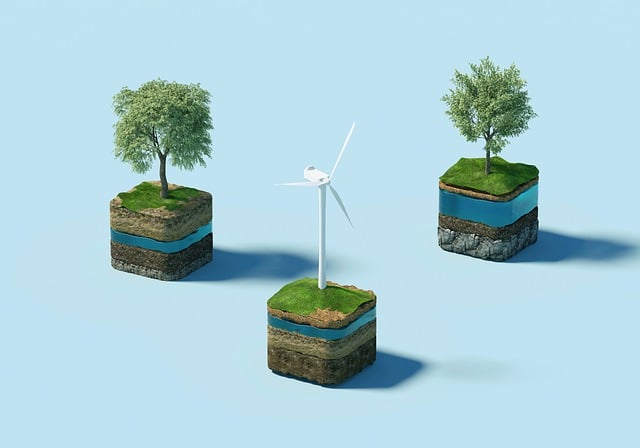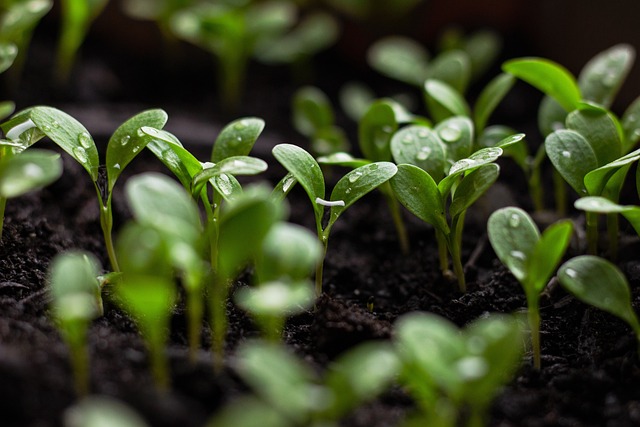In “101 Tips for Living a More Sustainable Lifestyle,” you’ll find a wealth of practical and easy-to-implement suggestions for making your everyday life more eco-friendly. From sustainable living around the house to sustainable fashion and technology, this article covers a wide range of areas where you can make a positive impact on the planet. Whether it’s switching to LED lighting, embracing second-hand shopping, or composting your organic waste, there’s something in here for everyone. So if you’re looking to reduce your environmental footprint and become a more conscious consumer, this article has got you covered.
But that’s not all! This article also recognizes the challenges and limitations that come with trying to live a completely sustainable lifestyle. It’s important to approach sustainability with a realistic mindset and understand that small changes can still make a big difference. So if you’re ready to learn more about how you can incorporate sustainability into your everyday life, read on and discover all the valuable tips and insights this article has to offer.
45 Tips for Living a More Sustainable Lifestyle
Living a sustainable lifestyle is becoming increasingly important as we strive to protect the environment and preserve our planet for future generations. Small changes in our daily habits can have a big impact on reducing our carbon footprint and promoting a more sustainable future. From sustainable living around the house to sustainable commuting, sustainable grocery shopping, sustainable fashion, sustainable beauty, sustainable gifting, sustainable technology, spending more time outside, and reducing our environmental footprint, there are countless ways we can make a difference. In this article, you will discover 101 tips for living a more sustainable lifestyle.

This image is property of pixabay.com.
Sustainable Lifestyle Around the House
- Switch to LED Lighting
By replacing traditional incandescent bulbs with energy-efficient LED lighting, you can significantly reduce your energy consumption and save money on your electricity bill. LED bulbs last longer and use less energy, making them a sustainable choice for lighting your home.
- Use Energy-Efficient Appliances
When replacing old appliances, opt for energy-efficient models. Look for the Energy Star label, which indicates that the appliance meets strict energy efficiency guidelines. Energy-efficient appliances use less electricity, reducing your energy consumption and lowering your utility bills.
- Optimize Home Insulation
Properly insulating your home can make a significant difference in reducing energy waste. Insulating your walls, roofs, and windows helps maintain a comfortable indoor temperature and reduces the need for excessive heating or air conditioning. This, in turn, lowers your energy consumption and reduces greenhouse gas emissions.
- Reduce Water Consumption
Conserving water is essential for sustainable living. Install water-saving fixtures such as low-flow showerheads and faucets. Repair any leaks promptly, as even a small drip can waste a significant amount of water over time. Additionally, consider collecting rainwater for watering plants and gardens.
- Start Your Own Compost Pile
Composting is a simple and effective way to reduce waste and create nutrient-rich soil for your plants. Compost food scraps, yard waste, and other organic materials instead of sending them to the landfill. Composting reduces greenhouse gas emissions and promotes a circular economy.
Sustainable Lifestyle for Commuting
- Use Public Transportation
Utilize public transportation whenever possible to reduce your carbon footprint. Public transit produces fewer emissions per passenger than individual cars, making it a more sustainable commuting option. Plan your routes in advance and consider purchasing a monthly pass to save money and encourage sustainable transportation.
- Carpool or Share Rides
Carpooling with coworkers or friends significantly reduces the number of cars on the road, cutting down on traffic congestion and emissions. Sharing rides not only contributes to sustainability but also allows for social interactions and cost-sharing.
- Switch to Biking or Walking
Embrace active transportation by biking or walking for short trips. Not only does this reduce emissions, but it also improves your physical health. Invest in a reliable bike and take advantage of bike lanes and trails in your area.
- Invest in an Electric Vehicle
If feasible, consider purchasing an electric vehicle (EV) as your primary mode of transportation. EVs produce zero emissions and significantly reduce our reliance on fossil fuels. As the demand for EVs increases, charging infrastructure is improving, making the switch to electric cars more accessible.
- Plan Efficient Routes
When running errands or going on longer trips, plan your routes efficiently to minimize mileage and fuel consumption. Combine multiple tasks into a single trip and use navigation apps to find the most direct, time-saving routes.

This image is property of pixabay.com.
Sustainable Lifestyle and Grocery Shopping
- Choose Organic and Locally Sourced Produce
Opt for organic fruits and vegetables to reduce exposure to harmful pesticides and support sustainable farming practices. Additionally, purchasing locally sourced produce reduces transportation emissions and supports local farmers.
- Avoid Single-Use Plastic Packaging
Say no to single-use plastic packaging by choosing products with minimal or no plastic packaging. Look for alternatives such as refillable containers or paper packaging. Bring your own reusable produce bags and avoid plastic bags when shopping.
- Bring Reusable Bags and Containers
Reduce waste by bringing your own reusable bags and containers when shopping. Keep reusable shopping bags in your car or bag, so they are always available. Carry a set of reusable containers to buy items from the bulk section or to pack leftovers from restaurants.
- Buy in Bulk to Minimize Packaging
Purchasing items in bulk reduces packaging waste and usually saves money. Look for bulk bins in your local grocery store to buy grains, nuts, seeds, and other dry goods. Bring your own reusable bags or containers to fill with the desired quantity.
- Support Sustainable Farming Practices
Choose food products that support sustainable farming practices such as regenerative agriculture or agroecology. Look for labels like “certified organic,” “fair trade,” or “Rainforest Alliance Certified” to ensure that your purchases align with your sustainability values.
Sustainable Lifestyle in Fashion
-
Buy Second-Hand or Vintage Clothing
Explore thrift stores, consignment shops, and online platforms for second-hand or vintage clothing. By giving pre-loved items a second life, you reduce the demand for new clothing production and extend the lifespan of garments.
-
Support Sustainable and Ethical Fashion Brands
When buying new clothing, opt for brands that prioritize sustainability and ethical manufacturing practices. Look for certifications like Global Organic Textile Standard (GOTS) or Fair Trade Certified to ensure that your clothes were produced in an environmentally and socially responsible manner.
-
Extend the Lifespan of Your Clothes
Take proper care of your clothes to extend their lifespan. Follow washing instructions, mend small repairs, and avoid excessive washing or dry cleaning. Quality clothing that lasts longer helps reduce the overall environmental impact of the fashion industry.
-
Learn Basic Clothing Repair Skills
Basic sewing skills can go a long way in extending the lifespan of your clothes. Learn simple repairs like sewing buttons, mending small tears, or hemming garments. Online tutorials and local workshops can help you acquire these valuable skills.
-
Opt for Natural and Sustainable Fabrics
Choose clothing made from natural and sustainable fabrics like organic cotton, hemp, linen, or bamboo. These fabrics are grown without pesticides and chemicals, reducing the environmental impact of the textile industry.

This image is property of pixabay.com.
Sustainable Beauty
-
Choose Natural and Organic Beauty Products
Opt for beauty products made with natural and organic ingredients. Look for certifications like “USDA Organic” or “COSMOS Organic” to ensure that the products you use are free from harmful chemicals and promote healthy skin and hair.
-
Make Your Own DIY Beauty Products
Reduce packaging waste and save money by making your own DIY beauty products. Simple ingredients like coconut oil, baking soda, and essential oils can be used to create homemade skincare, hair care, and body care products.
-
Reuse and Recycle Packaging
Support brands that use recyclable or refillable packaging. Additionally, repurpose or recycle beauty product containers whenever possible. Check with your local recycling facilities for accepted materials and best practices.
-
Minimize Water Usage in Beauty Routines
Conserve water by reducing the amount of water used in your beauty routines. Take shorter showers, turn off the tap while brushing your teeth or washing your face, and opt for dry shampoo or no-rinse products when possible.
-
Support Cruelty-Free and Eco-Friendly Brands
Choose beauty brands that prioritize animal welfare and environmental sustainability. Look for certifications like “Leaping Bunny” or “Cruelty-Free and Vegan” to ensure that the products you use are not tested on animals and are produced in an eco-friendly manner.
Sustainable Gifting
-
Give Experiences Instead of Physical Gifts
Instead of giving physical gifts, consider gifting experiences such as concert tickets, spa certificates, or cooking classes. Experiences create lasting memories without contributing to material consumption.
-
Choose Eco-Friendly and Sustainable Gifts
Look for eco-friendly and sustainable gift options like reusable water bottles, stainless steel straws, or eco-friendly home decor. Consider the environmental impact of the products you purchase and choose items made from sustainable materials.
-
Wrap Gifts with Recycled or Reusable Materials
Get creative when wrapping gifts by using recycled or reusable materials. Use old newspapers, fabric scraps, or reusable gift bags instead of traditional wrapping paper. Not only does this reduce waste, but it also adds a personal touch to your gift.
-
Support Local Artisans and Small Businesses
When choosing gifts, support local artisans and small businesses in your community. Locally made products often have a lower carbon footprint due to reduced transportation distances and support the local economy.
-
Encourage Regifting and Second-Hand Items
Break the stigma around regifting and promote the use of second-hand items. Pass along items that you no longer need or consider shopping at thrift stores and online marketplaces for unique and sustainable gifts.
Sustainable Technology
-
Use Energy-Efficient Devices and Appliances
Opt for energy-efficient devices and appliances when upgrading your technology. Look for Energy Star labels and compare energy usage before making a purchase. Energy-efficient technology reduces your energy consumption and saves money in the long run.
-
Recycle Electronic Waste Responsibly
Electronic waste, or e-waste, includes items like old phones, laptops, and televisions. Recycle these items responsibly to prevent hazardous materials from entering landfills. Many communities offer e-waste recycling programs or drop-off locations.
-
Opt for Renewable Energy Sources
Consider switching to renewable energy sources for your home, such as solar or wind power. Installing solar panels or subscribing to a renewable energy program can significantly reduce your carbon footprint.
-
Utilize Smart Home Technology for Energy Management
Smart home technology allows you to control and optimize your energy usage. Use smart thermostats to regulate temperature efficiently, smart plugs to control energy consumption, and smart lighting systems to automate lighting schedules.
-
Repair and Upgrade Gadgets Instead of Replacing
Instead of discarding old gadgets, consider repairing or upgrading them. Many issues can be resolved with simple repairs or software updates. Extending the lifespan of electronics helps reduce waste and conserves valuable resources.
Spending More Time Outside
-
Connect with Nature Through Outdoor Activities
Spending time in nature is not only beneficial for your well-being but also fosters a deeper appreciation and understanding of the environment. Engage in outdoor activities such as hiking, camping, or gardening to connect with nature.
-
Create a Sustainable Garden or Green Space
Cultivate a sustainable garden or create a green space in your yard. Grow your own fruits, vegetables, or herbs using organic and regenerative practices. A garden provides fresh produce, improves air quality, and supports local biodiversity.
-
Practice Leave-No-Trace Principles
When exploring natural environments, follow leave-no-trace principles to minimize your impact. Pack out all trash, stay on designated trails, and respect wildlife and habitats. Leave the environment as you found it, ensuring its preservation for future generations.
-
Adopt a Sustainable Outdoor Recreation Lifestyle
Embrace sustainable outdoor recreation practices, such as leaving areas better than you found them, respecting wildlife, and minimizing noise pollution. Educate yourself on the local regulations and guidelines to ensure a minimal impact on the environment.
-
Explore and Appreciate Natural Environments
Take time to explore and appreciate the natural environments around you. Visit parks, nature reserves, or protected areas to learn about the local flora and fauna. By understanding the beauty and value of nature, you’ll be more motivated to protect it.
Reducing Environmental Footprint
-
Reduce, Reuse, and Recycle
The mantra of “reduce, reuse, and recycle” is a fundamental principle of sustainable living. Reduce your consumption, reuse items whenever possible, and recycle materials appropriately. Practice mindful consumption and contribution to waste reduction.
-
Conserve Water and Energy
Conserve water and energy in your daily activities. Turn off lights when not in use, unplug electronics when fully charged or not in use, and practice efficient water use by taking shorter showers and fixing leaks promptly.
-
Minimize Food Waste
Food waste is a significant environmental issue. Plan meals, shop intentionally, and store food properly to minimize waste. Compost food scraps whenever possible and donate excess food to local food banks or shelters.
-
Avoid Single-Use Plastics
Single-use plastics contribute to pollution and harm ecosystems. Choose reusable alternatives such as stainless steel water bottles, cloth shopping bags, and glass food storage containers. Say no to plastic straws and utensils when dining out.
-
Opt for Eco-Friendly Cleaning Products
Choose eco-friendly cleaning products that are free from harmful chemicals. Look for plant-based ingredients and biodegradable packaging. Simplify your cleaning routine by making your own cleaning solutions using natural ingredients like vinegar and baking soda.
Conclusion
Living a more sustainable lifestyle is achievable, and every small action contributes to positive change. By implementing these 101 tips for living a more sustainable lifestyle, you can reduce your environmental footprint and be a part of creating a more sustainable future. While living completely sustainably may present challenges and limitations, continual learning and improvement are key. Embrace sustainability as a personal responsibility and inspire others around you to join the movement. Together, we can make a significant difference in preserving our planet for future generations.


